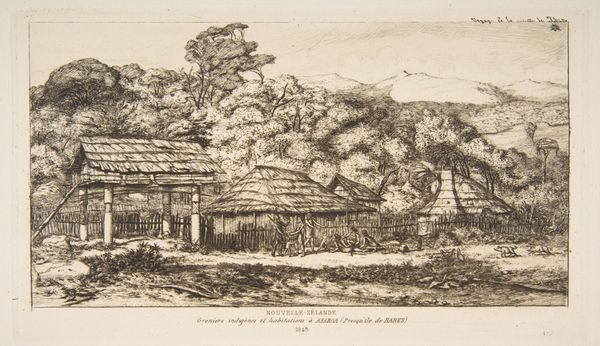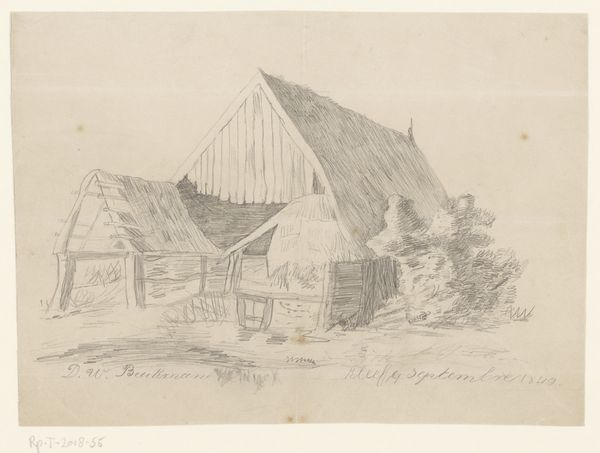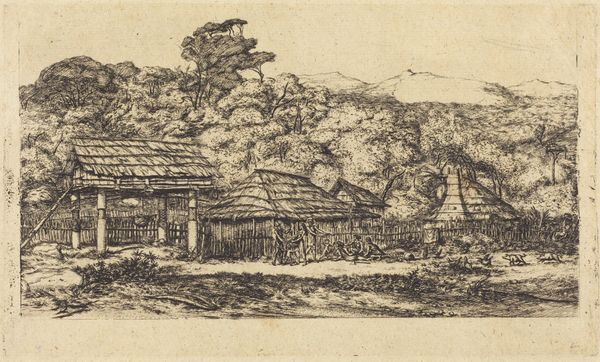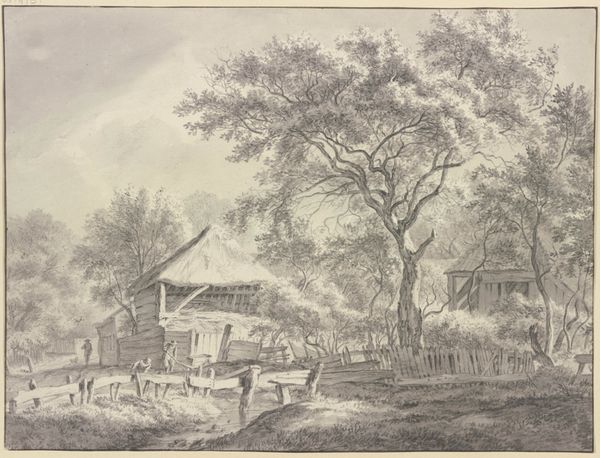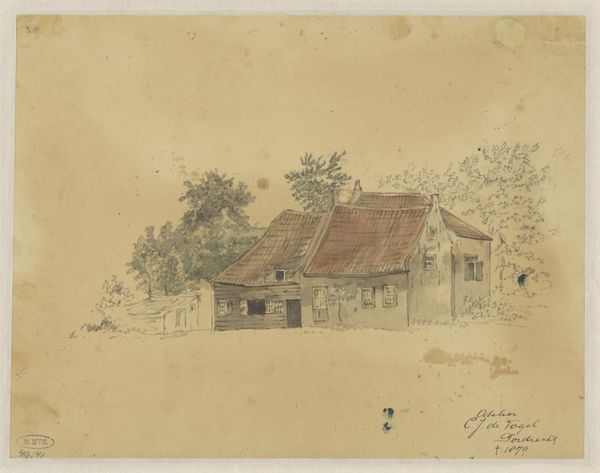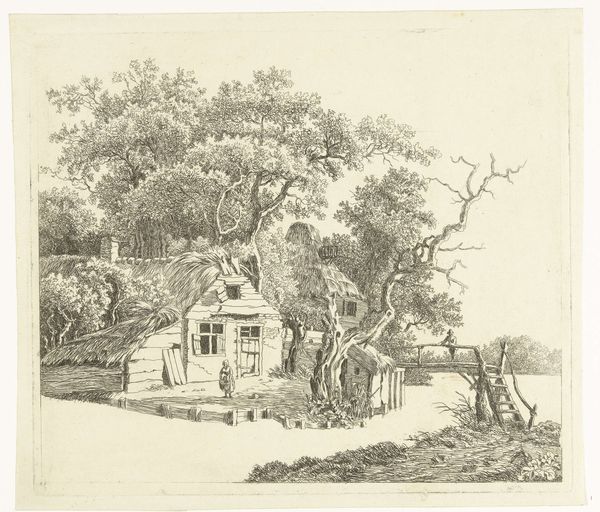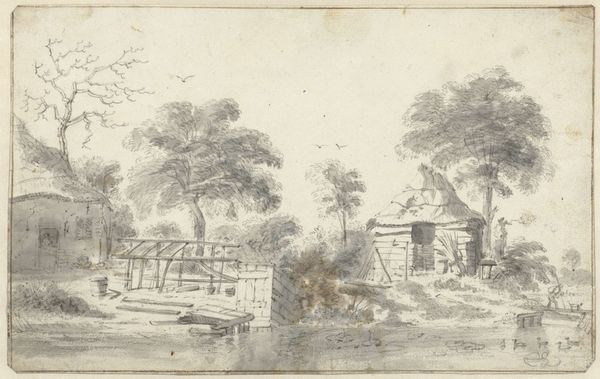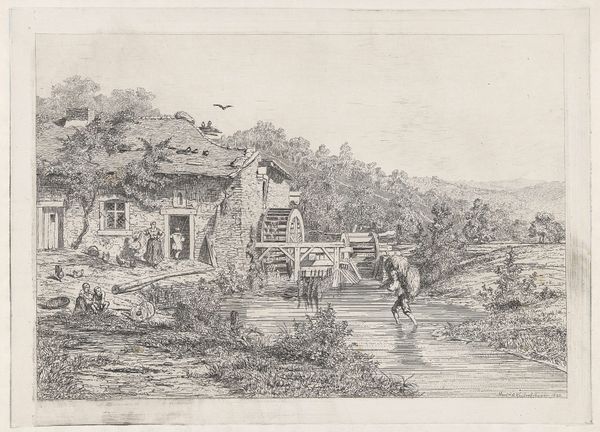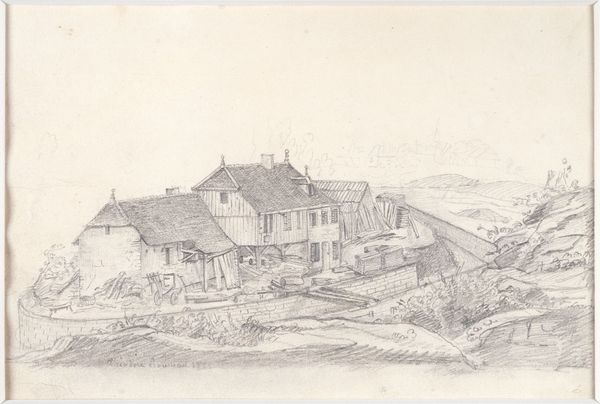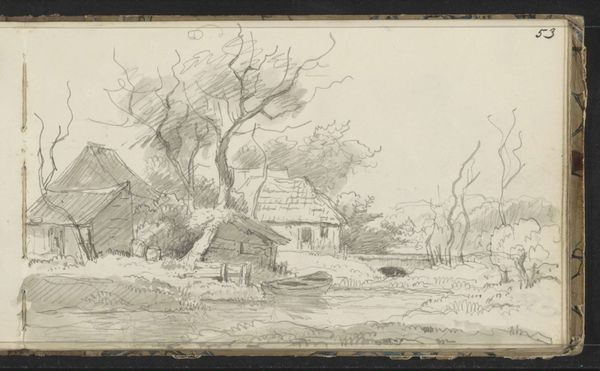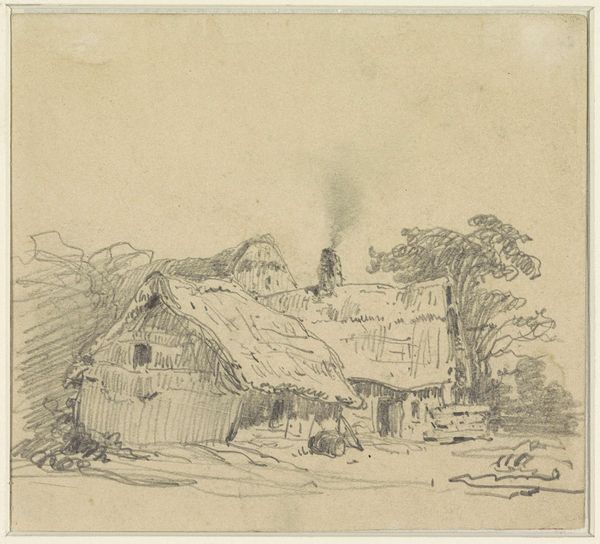
Greniers indigenes et habitations a Akaroa, presqu'Ile de Banks 1860
0:00
0:00
drawing, print, etching
#
drawing
# print
#
etching
#
landscape
#
etching
#
history-painting
Dimensions: overall: 18.6 x 30.2 cm (7 5/16 x 11 7/8 in.)
Copyright: National Gallery of Art: CC0 1.0
Curator: This is Charles Meryon's "Greniers indigenes et habitations a Akaroa, presqu'Ile de Banks," an etching from 1860. It depicts indigenous dwellings and storehouses in Akaroa, Banks Peninsula. Editor: The starkness of the etching captures a quiet sense of observation. It's all angles and receding planes. The dwellings themselves, though modest, feel very solid and structurally significant. Curator: Indeed, look at the formal balance struck between the constructed forms of the architecture and the almost wild overgrowth of the natural landscape surrounding it. Note how the thatched roofs echo the unruly textures of the foliage. Editor: Those thatched roofs! And the granaries…elevated like that. Immediately I think of symbols of prosperity, sustenance, security. What’s being stored is more than grain, it’s a communal heritage. I'm curious about their symbolism within Maori culture at the time. Curator: Precisely. The act of depiction itself, undertaken by Meryon, carries significance. We have the hand of a European artist mediating this specific encounter with the landscape and culture of New Zealand. The print captures a time and place on the brink of dramatic transformation due to colonization. Editor: Yes, I agree. This image hints at that tension. The people appear almost absorbed into the environment, their figures blurred into a few simple shapes, as they negotiate a new cultural dynamic with the outside world. I see hints of resistance in how they occupy the land here as its true occupants. The image itself then becomes a testament. Curator: Note Meryon's almost clinical detail in rendering the textures of the wood, thatch, and woven fences. The emphasis lends a structural permanence. But is this truly capturing the site as it was? What aspects were idealized through the formal rendering of its shapes and details? The line weights have a lot to do with how we percieve those contrasts in meaning. Editor: A perfect synthesis of line, form, and the cultural moment. Thank you for shedding light on that. I now view it through an entirely different lens. Curator: And for me, it brings into clearer view the crucial significance of formal rendering for interpreting the symbolic content within historical landscape images such as this one.
Comments
No comments
Be the first to comment and join the conversation on the ultimate creative platform.

